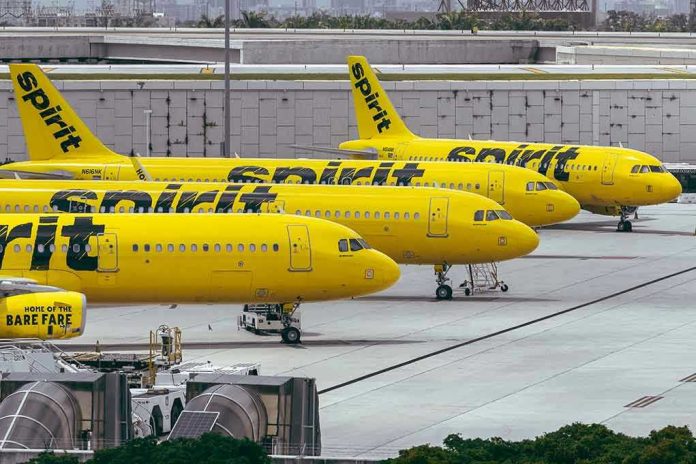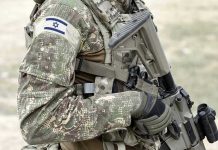
America’s air safety protocols were put to the test as a distracted Spirit Airlines pilot flew perilously close to President Trump’s Air Force One, igniting urgent questions about cockpit discipline and the real-world risks of unchecked digital distractions in our skies.
Story Snapshot
- A Spirit Airlines pilot was sternly scolded by air traffic control for delayed responses near Air Force One carrying President Trump.
- The controller’s “Pay attention. Get off the iPad.” rebuke was widely circulated, highlighting cockpit distraction risks.
- FAA and Spirit Airlines confirm no breach of safety procedures, but the incident renews scrutiny of digital device use in cockpits.
- Industry experts call for stricter oversight on technology distractions to uphold airspace security near VIP flights.
Critical Incident: Spirit Airlines and Presidential Airspace
As Spirit Airlines Flight 1300 traversed the congested skies over Long Island, air traffic controllers repeatedly ordered the pilot to turn away from Air Force One, which was transporting President Trump and First Lady Melania to London. The pilot’s sluggish response prompted the controller to issue the now-infamous command: “Pay attention. Get off the iPad.” The exchange, captured and disseminated by LiveATC.net, quickly went viral, sparking national debate on pilot attentiveness and airspace safety near presidential aircraft. Despite heightened tension, Spirit Airlines and the FAA later affirmed that required separation was maintained and all procedures followed, but the incident exposed vulnerabilities in cockpit discipline when digital devices are present.
Airspace Security and Digital Distractions: Background and Trends
Strict protocols govern aircraft movement around Air Force One, especially over busy hubs like New York, where temporary flight restrictions and heightened vigilance are routine. Modern cockpits rely heavily on digital devices such as iPads for navigation and operational checklists, replacing paper charts and streamlining workflow. While these tools are now standard, experts warn that overreliance can hinder rapid communication with air traffic control—an unacceptable risk when VIP flights are involved. Previous incidents have led to procedural reviews, but this event marks a rare public confrontation tied directly to device distraction, underscoring the need for clear boundaries and enforcement in high-security airspace.
Stakeholders and Systemic Accountability
Key players in this event include the Spirit Airlines pilot responsible for compliance, the New York air traffic controller charged with maintaining safe separation, the FAA overseeing regulatory standards, and, crucially, President Trump as the protected VIP passenger. Controllers exercise operational authority in regulated airspace, and the FAA retains ultimate regulatory power, while airlines like Spirit must guarantee crew training and adherence to safety protocols. The balance of authority and accountability among these parties is critical, especially when presidential flights amplify both the stakes and public scrutiny. Official statements from all parties stressed procedural compliance, but the controller’s frustration highlighted operational gaps that cannot be ignored.
Industry unions and aviation safety experts have weighed in, acknowledging that while iPads are vital cockpit tools, they must never detract from the pilot’s primary responsibility to maintain situational awareness and follow ATC instructions promptly.
Policy Implications and Public Debate
Following immediate reassurances from Spirit Airlines and the FAA, the incident remains under preliminary review, with no formal disciplinary action announced. The audio of the exchange continues to circulate, fueling discussion on the impact of digital device distractions in aviation. In the short term, this event has heightened public awareness of the need for focused operations in safety-critical environments and prompted scrutiny of Spirit Airlines’ protocols. Long-term, it may lead to a broader industry review of cockpit device policies and reinforce the authority of air traffic controllers—especially regarding compliance near presidential aircraft. Political sensitivity remains high, given the direct involvement of President Trump and the symbolic importance of Air Force One, making this a key test case for balancing technological advancement with traditional safety discipline.
‘Pay Attention’: Air Traffic Controller Warns Spirit Airlines To Move Away From Trump’s Air Force One https://t.co/eGdcSPENtB via @dailycaller
— @LibbyTard6 (@LibbyTard6) September 17, 2025
Expert Analysis: Technology, Safety, and Conservative Values
Aviation experts and human factors researchers emphasize the necessity of undivided attention during critical phases of flight, cautioning that multitasking with digital devices poses real risks even as these tools become indispensable. Conservative voices in the industry argue that the sanctity of airspace—especially around presidential flights—must not be compromised by technological distractions or lax enforcement. The consensus among professionals is clear: while innovation has its place, operational discipline and respect for chain-of-command are paramount in safeguarding passengers, crew, and the nation’s leaders. This incident underscores the need for robust standards that preserve safety and uphold the values of accountability, responsibility, and common sense in American aviation.
Sources:
Air traffic controller scolds pilot after warnings to turn
Pay attention: Controller admonishes Spirit pilot flying near Air Force One
Air traffic controller tells Spirit pilot ‘pay attention’
Pay attention: Trump’s Air Force One has close encounter with Spirit jet
Spirit Airlines flight warned to move farther from Air Force One over Long Island
Get off the iPad: Spirit Airlines pilots scolded for flying too close to Air Force One









